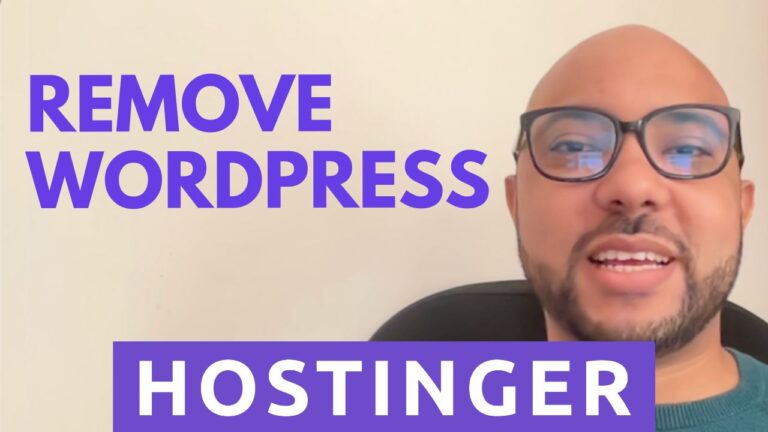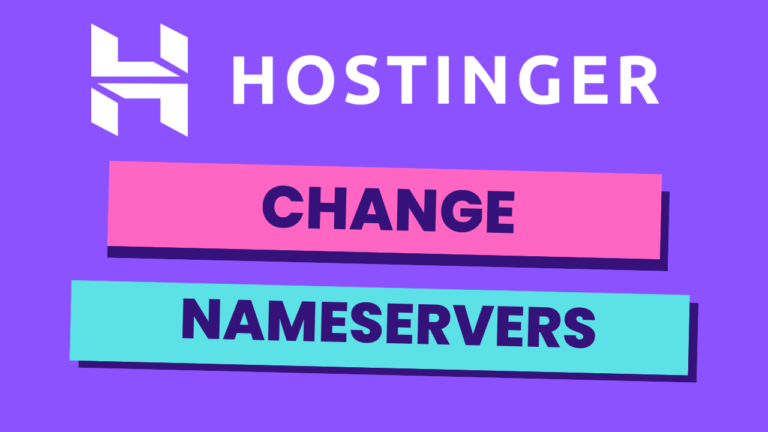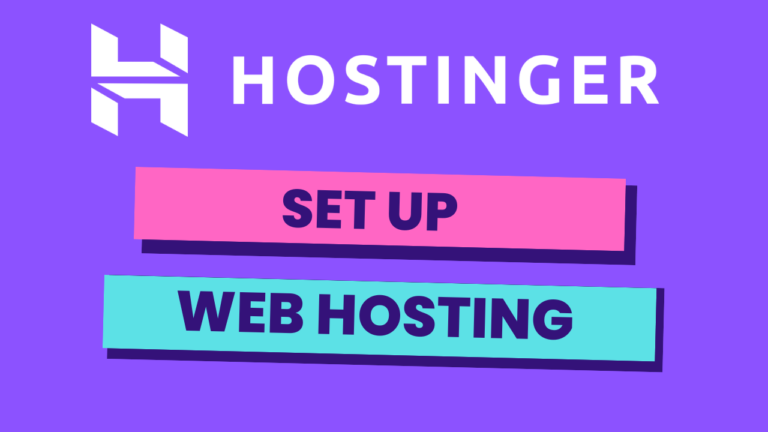How to Create a Furniture Store Online: With WooCommerce and WordPress
If you’re thinking about starting an online furniture store, there’s no need to spend a fortune on web development and design. With WooCommerce and WordPress, you can create a professional-looking website for almost free.
WooCommerce is a plugin that turns a WordPress site into a fully functioning eCommerce store. It’s free to download and use, and it comes with almost everything you need to start selling products online.
WordPress is a content management system (CMS) that powers millions of websites around the world. It’s free to use and easy to set up, making it the perfect platform for building an online store.
To get started, all you need is a domain name and hosting account for your website. Then you can install WordPress and the WooCommerce plugin, and start adding products to your store.
In this article, we’ll show you how to create an online furniture store with WooCommerce and WordPress. We’ll also give you some tips on choosing the right furniture for your store and marketing your business online.
Ready to get started? Let’s go!
How to Create an Online Furniture Store with WordPress and WooCommerce (In 3 Steps)
Step 1: Choose a Domain Name and Hosting Plan
The first thing you need to do is choose a domain name for your website. Your domain name is what people will type into their browser to find your site. For example, our domain name is wpbeginner.com.
Your domain name should be short, easy to remember, and relevant to your business. Once you’ve chosen a domain name, you’ll need to register it with a domain registrar like GoDaddy or Namecheap.
After your domain name is registered, you’ll need to set up web hosting for your site. This is where your website’s files will be stored, and it’s what makes your site accessible to people on the internet.
We recommend using Bluehost for hosting your WordPress website because they’re an officially recommended WordPress hosting provider. Plus, they’re offering our readers a special discounted rate of only $2.75 per month when you sign up through this link.
NOTE: Bluehost is currently running a promotion where you can get started with their Basic plan for only $2.75 per month (instead of the regular price of $5.95 per month). This is a great deal if you’re just getting started with your online store and don’t need all the bells and whistles of the more expensive plans.
Once you sign up for web hosting, you’ll be able to install WordPress with just a few clicks. We have a step-by-step guide on how to make a website that walks you through the entire process.
Step 2: Install WordPress and the WooCommerce Plugin
Now that you have web hosting set up, it’s time to install WordPress. Again, we have a step-by-step guide on how to install WordPress that will walk you through the entire process.
Once WordPress is installed, the next thing you need to do is install the WooCommerce plugin. WooCommerce is a free plugin that turns a WordPress site into an online store. It’s what we’ll be using to build our furniture store.
To install WooCommerce, log into your WordPress site and navigate to Plugins » Add New. On the next screen, type “WooCommerce” into the search field and hit Enter. This will bring up the WooCommerce plugin in the search results.
Click on the “Install Now” button, and then click on the “Activate” button to activate the plugin.
Once the plugin is activated, you’ll be redirected to the WooCommerce setup wizard. This wizard will help you set up all the basic settings for your store, such as your currency, shipping options, and tax rates.
We recommend that you follow along with the setup wizard and enter all the required information. Once you’re done, click on the “Continue” button to move on.
On the next screen, you’ll be asked to choose a theme for your WooCommerce store. A theme is a collection of files that control the look and feel of your website.
There are thousands of WordPress themes available, both free and premium. For our purposes, we’ll be using the Storefront theme which is created by the same team behind WooCommerce. It’s a free theme with all the features you need to create a successful online store.
To install the Storefront theme, navigate to Appearance » Themes in your WordPress dashboard. On the next screen, click on the “Add New” button at the top.
On the next screen, type “Storefront” into the search field and hit Enter. This will bring up the Storefront theme in the search results.
Click on the “Install” button, and then click on the “Activate” button to activate the theme.
You’ve now installed WordPress and the WooCommerce plugin, and you’ve chosen a theme for your website. In the next step, we’ll show you how to set up your WooCommerce store pages.
Step 3: Set Up Your WooCommerce Store Pages
Now that you have WordPress and WooCommerce installed, it’s time to set up your store pages. By default, WooCommerce comes with several pre-built pages that you’ll need for your online store. These include a shop page, cart page, checkout page, and my account page.
WooCommerce also automatically generates these pages when you install the plugin. However, they’re not very pretty and they don’t really match the Storefront theme that we installed in the previous step.
To fix this, we need to tell WooCommerce to use the Storefront templates for these pages. To do that, navigate to Appearance » Customize from your WordPress dashboard. This will launch the WordPress customizer interface.
On the next screen, click on the “WooCommerce” option from the left-hand sidebar. This will bring up all the WooCommerce settings that you can customize from the customizer interface.
Scroll down a little bit and click on the “Product Pages” option. On the next screen, make sure to check the “Use Storefront template” option and then click on the “Publish” button to save your changes.
You’ve now told WooCommerce to use the Storefront templates for all the default WooCommerce pages. The next step is to actually add some products to your store.
Step 4: Add Products to Your WooCommerce Store
Now that you have WordPress and WooCommerce installed, and you’ve set up your store pages, it’s time to add some products. In this step, we’ll show you how to add a simple product to your WooCommerce store.
To add a product, log into your WordPress dashboard and navigate to Products » Add New from the left-hand sidebar. On the next screen, you’ll be asked to enter a product name and description.
Scroll down a little bit and you’ll see the “Product Data” meta box. This is where you can enter all the details about your product, such as the price, stock status, shipping options, etc.
For our purposes, we’ll just enter a simple product name, description, and price. Once you’re done, click on the “Publish” button to publish your product.
You’ve now added your first product to your WooCommerce store! In the next step, we’ll show you how to set up payment methods for your store.
Step 5: Set Up Payment Methods for Your WooCommerce Store
Now that you’ve added some products to your store, it’s time to set up payment methods. By default, WooCommerce comes with several built-in payment methods, including PayPal and Stripe.
To set up a payment method, log into your WordPress dashboard and navigate to WooCommerce » Settings from the left-hand sidebar. On the next screen, click on the “Checkout” tab from the top.
Scroll down a little bit and you’ll see all the available payment methods. For our purposes, we’ll just check the “PayPal” and “Credit Card (Stripe)” options. Once you’re done, click on the “Save changes” button to save your changes.
You’ve now set up payment methods for your WooCommerce store! In the next step, we’ll show you how to set up shipping options for your store.
Step 6: Set Up Shipping Options for Your WooCommerce Store
Now that you’ve set up payment methods for your store, it’s time to set up shipping options. By default, WooCommerce comes with several built-in shipping methods, including flat rate and free shipping.
To set up shipping options, log into your WordPress dashboard and navigate to WooCommerce » Settings from the left-hand sidebar. On the next screen, click on the “Shipping” tab from the top.
Scroll down a little bit and you’ll see all the available shipping methods. For our purposes, we’ll just check the “Flat Rate” and “Free Shipping” options. Once you’re done, click on the “Save changes” button to save your changes.
You’ve now set up shipping options for your WooCommerce store! In the next step, we’ll show you how to set up taxes for your store.
Step 7: Set Up Taxes for Your WooCommerce Store
If you plan on selling products in the United States, then you’ll need to set up taxes for your WooCommerce store. By default, WooCommerce comes with several built-in tax options, including US sales tax and EU VAT.
To set up taxes for your store, log into your WordPress dashboard and navigate to WooCommerce » Settings from the left-hand sidebar. On the next screen, click on the “Tax” tab from the top.
Scroll down a little bit and you’ll see all the available tax options. For our purposes, we’ll just check the “US Sales Tax” and “EU VAT” options. Once you’re done, click on the “Save changes” button to save your changes.
You’ve now set up taxes for your WooCommerce store! In the next step, we’ll show you how to customize the look of your store.
Step 8: Customize the Look of Your WooCommerce Store
Now that you’ve set up all the technical aspects of your WooCommerce store, it’s time to customize the look of your store. By default, WooCommerce comes with several built-in themes, including Storefront and Shop Isle.
To install a WooCommerce compatible theme, log into your WordPress dashboard and navigate to Appearance » Themes from the left-hand sidebar. On the next screen, click on the “Add New” button at the top.
On the next screen, you’ll be able to search for WooCommerce compatible themes from the WordPress.org theme directory. For our purposes, we’ll just search for “Storefront”.
Once you’ve found a theme that you like, click on the “Install” button and then activate it from the next screen.
You’ve now installed and activated a WooCommerce compatible theme for your store! In the next step, we’ll show you how to install some essential WooCommerce plugins.
Step 9: Install Essential WooCommerce Plugins
Now that you’ve installed a WooCommerce compatible theme, it’s time to install some essential WooCommerce plugins. By default, WooCommerce comes with several built-in plugins, including Jetpack and Yoast SEO.
To install a plugin, log into your WordPress dashboard and navigate to Plugins » Add New from the left-hand sidebar. On the next screen, you’ll be able to search for plugins from the WordPress.org plugin directory.
For our purposes, we’ll just search for “WooCommerce”. Once you’ve found a plugin that you like, click on the “Install Now” button and then activate it from the next screen.
You’ve now installed and activated an essential WooCommerce plugin for your store! In the next step, we’ll show you how to create your first product.
Step 10: Create Your First Product
Now that you’ve set up all the technical aspects of your WooCommerce store, it’s time to create your first product. To do that, log into your WordPress dashboard and navigate to Products » Add New from the left-hand sidebar.
On the next screen, you’ll need to enter a title and description for your product. You can also upload an image or video for your product. Once you’re done, click on the “Publish” button to publish your product.
You’ve now created your first product! In the next step, we’ll show you how to take payments for your products.
Step 11: Take Payments for Your Products
Now that you’ve created your first product, it’s time to take payments for your products. WooCommerce comes with several built-in payment options, including PayPal and Stripe.
To set up payments for your store, log into your WordPress dashboard and navigate to WooCommerce » Settings from the left-hand sidebar. On the next screen, click on the “Checkout” tab from the top.
Scroll down a little bit and you’ll see all the available payment options. For our purposes, we’ll just check the “PayPal” and “Stripe” options. Once you’re done, click on the “Save changes” button to save your changes.
You’ve now set up payments for your WooCommerce store! In the next step, we’ll show you how to ship your products.
Step 12: Ship Your Products
Now that you’ve set up payments for your store, it’s time to ship your products. WooCommerce comes with several built-in shipping options, including flat rate and free shipping.
To set up shipping for your store, log into your WordPress dashboard and navigate to WooCommerce » Settings from the left-hand sidebar. On the next screen, click on the “Shipping” tab from the top.
Scroll down a little bit and you’ll see all the available shipping options. For our purposes, we’ll just check the “Flat rate” and “Free shipping” options. Once you’re done, click on the “Save changes” button to save your changes.
You’ve now set up shipping for your WooCommerce store! In the next step, we’ll show you how to configure taxes for your store.
Step 13: Configure Taxes for Your Store
Now that you’ve set up shipping for your store, it’s time to configure taxes for your store. WooCommerce comes with several built-in tax options, including VAT and GST.
To set up taxes for your store, log into your WordPress dashboard and navigate to WooCommerce » Settings from the left-hand sidebar. On the next screen, click on the “Taxes” tab from the top.
Scroll down a little bit and you’ll see all the available tax options. For our purposes, we’ll just check the “VAT” and “GST” options. Once you’re done, click on the “Save changes” button to save your changes.
You’ve now configured taxes for your WooCommerce store! In the next step, we’ll show you how to set up coupons for your store.
Step 14: Set Up Coupons for Your Store
Now that you’ve configured taxes for your store, it’s time to set up coupons for your store. WooCommerce comes with several built-in coupon options, including percentage and fixed amount discounts.
To set up coupons for your store, log into your WordPress dashboard and navigate to WooCommerce » Settings from the left-hand sidebar. On the next screen, click on the “Coupons” tab from the top.
Scroll down a little bit and you’ll see all the available coupon options. For our purposes, we’ll just check the “Percentage” and “Fixed amount” options. Once you’re done, click on the “Save changes” button to save your changes.
You’ve now set up coupons for your WooCommerce store! In the next step, we’ll show you how to set up email notifications for your store.
Step 15: Set Up Email Notifications for Your Store
Now that you’ve set up coupons for your store, it’s time to set up email notifications for your store. WooCommerce comes with several built-in email notification options, including new order and customer invoice emails.
To set up email notifications for your store, log into your WordPress dashboard and navigate to WooCommerce » Settings from the left-hand sidebar. On the next screen, click on the “Email” tab from the top.
Scroll down a little bit and you’ll see all the available email notification options. For our purposes, we’ll just check the “New order” and “Customer invoice” options. Once you’re done, click on the “Save changes” button to save your changes.
You’ve now set up email notifications for your WooCommerce store! In the next step, we’ll show you how to set up additional options for your store.
Step 16: Set Up Additional Options for Your Store
Now that you’ve set up email notifications for your store, it’s time to set up additional options for your store. WooCommerce comes with several built-in additional options, including product reviews and customer accounts.
To set up additional options for your store, log into your WordPress dashboard and navigate to WooCommerce » Settings from the left-hand sidebar. On the next screen, click on the “Additional” tab from the top.
Scroll down a little bit and you’ll see all the available additional options. For our purposes, we’ll just check the “Product reviews” and “Customer accounts” options. Once you’re done, click on the “Save changes” button to save your changes.
You’ve now set up additional options for your WooCommerce store! In the next step, we’ll show you how to set up payment methods for your store.
Step 17: Set Up Payment Methods for Your Store
Now that you’ve set up additional options for your store, it’s time to set up payment methods for your store. WooCommerce comes with several built-in payment method options, including PayPal and Stripe.
To set up payment methods for your store, log into your WordPress dashboard and navigate to WooCommerce » Settings from the left-hand sidebar. On the next screen, click on the “Payments” tab from the top.
Scroll down a little bit and you’ll see all the available payment method options. For our purposes, we’ll just check the “PayPal” and “Stripe” options. Once you’re done, click on the “Save changes” button to save your changes.
You’ve now set up payment methods for your WooCommerce store! In the next step, we’ll show you how to set up shipping methods for your store.
Step 18: Set Up Shipping Methods for Your Store
Now that you’ve set up payment methods for your store, it’s time to set up shipping methods for your store. WooCommerce comes with several built-in shipping method options, including flat rate and free shipping.
To set up shipping methods for your store, log into your WordPress dashboard and navigate to WooCommerce » Settings from the left-hand sidebar. On the next screen, click on the “Shipping” tab from the top.
Scroll down a little bit and you’ll see all the available shipping method options. For our purposes, we’ll just check the “Flat rate” and “Free shipping” options. Once you’re done, click on the “Save changes” button to save your changes.
You’ve now set up shipping methods for your WooCommerce store! In the next step, we’ll show you how to connect your store to Jetpack.
Step 19: Connect Your Store to Jetpack
Now that you’ve set up shipping methods for your store, it’s time to connect your store to Jetpack. Jetpack is a plugin that comes with several features for WordPress sites, including social media integration and security features.
To connect your store to Jetpack, log into your WordPress dashboard and navigate to Jetpack » Settings from the left-hand sidebar. On the next screen, scroll down to the “Connect to WordPress.com” section and click on the “Connect Jetpack” button.
You’ll be redirected to the WordPress.com signup page where you’ll need to create a free account. Once you’re done, click on the “Approve” button to connect your site to Jetpack.
You’ve now connected your WooCommerce store to Jetpack! In the next step, we’ll show you how to add products to your store.
Step 20: Add Products to Your Store
Now that you’ve connected your store to Jetpack, it’s time to add products to your store. To add products to your store, log into your WordPress dashboard and navigate to Products » Add New from the left-hand sidebar.
On the next screen, you’ll be able to add a new product to your store. First, you’ll need to enter a product name and description. Once you’re done, scroll down to the “Product data” section and select “Simple product” from the dropdown menu.
Once you’ve selected a product type, you’ll be able to add a price for your product. You can also add sale prices, tax options, shipping options, and more. Once you’re done, scroll down to the “Product categories” section and select the appropriate category for your product.
You can also add tags for your product in the “Product tags” section. Once you’re done adding all the product details, click on the “Publish” button to publish your product.
You’ve now added a new product to your WooCommerce store! In the next step, we’ll show you how to add a coupon code for your store.
Step 21: Add a Coupon Code for Your Store
Now that you’ve added products to your store, it’s time to add a coupon code for your store. To do that, log into your WordPress dashboard and navigate to WooCommerce » Coupons from the left-hand sidebar. On the next screen, click on the “Add Coupon” button.
On the next screen, you’ll be able to add details for your coupon code. First, you’ll need to enter a coupon code and description. Once you’re done, scroll down to the “Coupon data” section and select “Percentage Discount” from the dropdown menu.
You can also specify a discount amount, expiration date, usage limit, and more. Once you’re done, click on the “Publish” button to publish your coupon code.
You’ve now added a coupon code for your WooCommerce store! In the next step, we’ll show you how to set up taxes for your store.
Thanks for reading! We hope this article helped you learn how to create an online furniture store with WooCommerce and WordPress.






